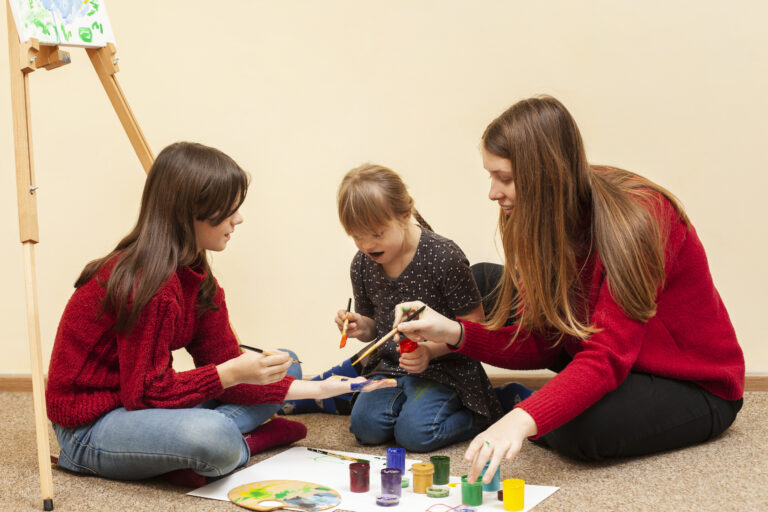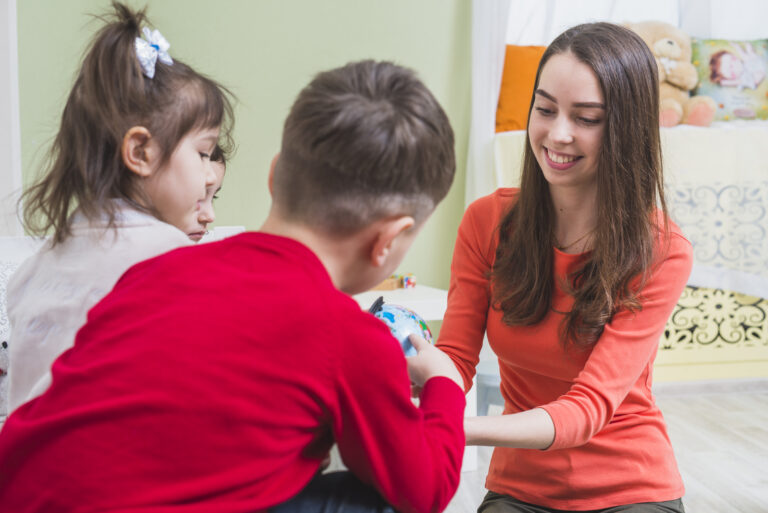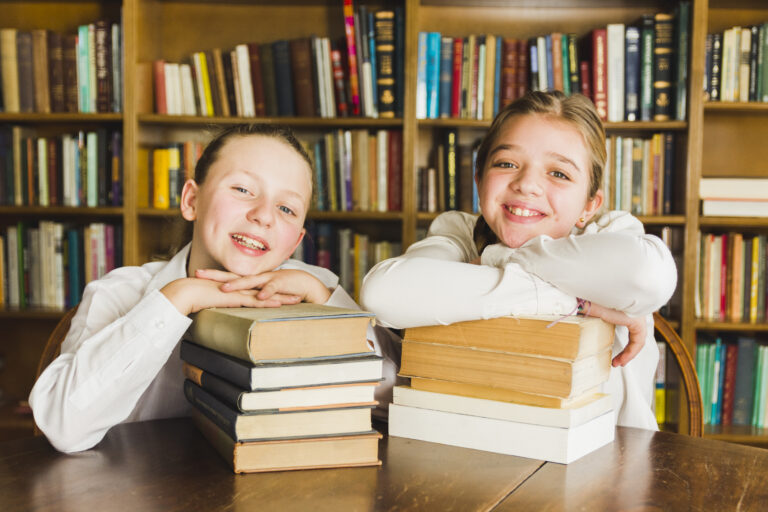Adapting Learning Environments for Diverse Needs
Adapting to the intricacies of each learner’s needs, educators and parents are increasingly recognizing the intersection of pediatrics and education, especially for children on the spectrum. As we prepare for the new school year, teachers, armed with knowledge from various fields, including physical therapy, design environments that not only accommodate but also celebrate every child’s differences. Bringing forth an inclusive approach requires meticulous consideration of both the physical and psychosocial aspects of learning spaces. In this article, readers will gain insights into the transformative strategies that create opportunities for all students to thrive academically and socially. Join us as we examine how to weave inclusivity into the very fabric of educational landscapes.
Key Takeaways
- Classroom design must be dynamic to cater to different student abilities
- Proper technology integration is essential for equitable learning experiences
- Flexible seating and learning stations foster motivation and social skills
- Educator proficiency in technology enhances learning for neurodiverse students
- Social-emotional learning integration is key for student development
Creating Inclusive Physical Spaces in Schools
In an earnest effort to accommodate the wide spectrum of learning needs present in today’s educational spaces, astute assessments of existing classroom layouts are imperative. In a Sensory Disorder school, where these needs are especially pronounced, scrutinizing current spatial arrangements becomes even more crucial. Educators and administrators can pinpoint areas where enhancements are needed to promote accessibility. Such evaluations often reveal the necessity for motor planning considerations and the incorporation of flexible seating, making it possible for students to seamlessly access resources and support. Moreover, the thoughtful assimilation of various learning stations becomes as essential as a school uniform—invariable and integral to the school experience. As part of a robust FAQ for educators, details of this transition underscore the necessity for a dynamic approach to spatial design, allowing children of all abilities to thrive.
4o
Assessing Current Spatial Arrangements for Accessibility
In reviewing the layout of school environments, special attention to the brain’s response to the physical space is necessary. Educators must recognize how a student’s neurological pathways interact with their surroundings to enhance the overall educational experience, ensuring that all spaces within the school are crafted to support diverse learners and their unique sensory needs.
Technology plays a pivotal role in modern education, yet its integration requires careful planning to balance its benefits with potential drawbacks like excessive screen time. By mapping out classroom zones with strategic placement of technological tools, schools create accessible and equitable learning experiences for every student, regardless of their individual sensory and cognitive profiles.
Implementing Flexible Seating and Learning Stations
In the pursuit of inclusivity, the implementation of flexible seating practices within classrooms serves as a catalyst for advancing student motivation and engagement. By offering choices, ranging from standing desks to soft seating areas, educators enable children to take a proactive approach to their learning preferences, fostering a nurturing environment where independence flourishes.
Collaborative work, a staple in the educational team’s methodology, is supported when learning stations are thoughtfully arranged around the space, stimulating social interaction and problem-solving skills. Moreover, this practical approach resonates with real-world experiences, akin to the dynamics found in a professional internship, preparing students for future endeavors outside the academic sphere.
Integrating Technology to Support Varied Learning Styles
Adapting learning environments to meet the unique needs of each student hinges on identifying the appropriate technology tools that align with diverse learning styles. The vast array of educational technology, from apps that spark creativity to music composition software that connects with auditory learners, requires that educators become proficient in various tech integration strategies. This not only involves grasping the nuances of how different platforms can enhance learning across subjects, including physical education but also demands a methodology that allows for the seamless integration of these tools into the fabric of day-to-day teaching. As schools evolve, equipping educators with the skill to incorporate technology in a way that enriches the learning experience becomes essential, ultimately ensuring that every mind in the classroom has access to the resources necessary to thrive.
Identifying Technology Tools That Cater to Diverse Needs
In the quest for an inclusive learning arena, identifying potent technology tools becomes paramount, particularly those offering well-structured information without overwhelming the senses. Assistive technology, meticulously chosen, not only tempers sensory overload for those with specific medical diagnoses but also functions as an educational lifeline, allowing equal participation in learning activities.
Professionals who navigate the complexities of insurance coverage for assistive devices understand their significance as a backbone for academic success. These tools, tailored to address the varying challenges faced by neurodiverse individuals, are critical elements in dismantling barriers to information access, thereby fostering an environment of continuous support and opportunity.
Training Educators on Effective Tech Integration Strategies
Educator proficiency in tech integration directly touches on the outcomes for students with developmental coordination disorder, paving the way for their acquisition of vital life skills. This advancement in educator expertise reduces anxiety, nurtures autonomy, and enhances the potential for success in not just academic realms but in daily life interactions as well.
Central to this strategic training is fostering a culture of collaboration among teachers, which gains particular significance in preschool settings where the groundwork for future learning is established. Engagement with technology that supports collaborative learning experiences equips educators to constructively guide young learners with patience and understanding, acknowledging each child’s unique learning journey.
Cultivating Emotional Intelligence and Empathy Among Students
Embedding social-emotional learning into the curriculum is a pivotal strategy for addressing the varied needs within a classroom, particularly for students receiving autism therapies. As the diagnostic and statistical manual of mental disorders outlines, understanding an individual’s learning styles is fundamental to tailoring their education. Research has illuminated the importance of integrating lessons that focus on emotional intelligence, as it plays a critical role in student development and interaction. Additionally, facilitating group activities that encourage empathy not only builds stronger relationships between peers but also prepares students with the emotional tools necessary to navigate the complexities of societal dynamics, further enriching the educational tapestry with threads of compassion and understanding.
Embedding Social-Emotional Learning Into the Curriculum
Integrating social-emotional learning into academic curriculums is pivotal as it enhances students’ problem-solving capabilities. By addressing emotional intelligence development in tandem with traditional subjects, schools assist students in achieving higher grades while they learn to navigate the complexities innate in social interactions and personal responses to various disorders.
Observing students in a natural environment reveals insightful signs and symptoms related to their social and emotional learning needs. This observation informs teachers on how to scaffold their instruction, ensuring that discussions around feelings, relationships, and empathy become an embedded part of the educational atmosphere, reinforcing a comprehensive framework for learning across all areas of development.
Facilitating Group Activities That Encourage Empathy
Management of classroom dynamics is enriched when students engage in group activities designed to bolster empathy, a skill integral to developing healthy social skills. These exercises allow students to comprehend and appreciate the nuances of neurodiversity, laying the groundwork for a community where bullying is combatted with understanding and respect.
Activities that prompt cooperative learning enable students to not only appreciate differing perspectives but also offer support to peers, regardless of diagnosis or abilities. In fostering such understanding, students are better equipped to interact with empathy, shaping a future where inclusiveness is the norm.
Designing Curriculum With Universal Design for Learning (UDL) Principles
To catalyze academic achievement in a diverse learning landscape, educators are embracing the Universal Design for Learning (UDL) framework. This approach is centered on crafting lessons that resonate with the multifaceted ways students interact and engage with materials. Recognizing the varied responses of the nervous system to different types of stimuli, UDL principles guide teachers in structuring lesson plans that spark motivation and interest for all. Such strategic planning is essential not only to enhance the effectiveness of therapy and intervention strategies but also to ensure lessons are perceived as relatable and meaningful by each student. Meanwhile, the creation of accessible materials, easily navigable by any web browser, further amplifies the inclusivity of the curriculum, diminishing obstacles and seamlessly adapting to the needs of every learner.
Planning Lessons With Multiple Means of Engagement
An expert in curriculum design understands that the foundation of a free appropriate public education is the consideration of every learner within the community. Strategic lesson planning incorporates multisensory integration, ensuring that students engage with concepts through auditory, visual, and kinesthetic pathways, thus catering to a spectrum of learning preferences and neurological differences.
Through community feedback and ongoing professional development, educators refine their techniques in creating lessons that provide multiple means of engagement. The aim is to transform educational materials from static paper resources into dynamic experiences, offering a comprehensive approach that resonates with and empowers every student in their learning journey.
Creating Accessible Materials for All Learners
Within the paradigm of Universal Design for Learning, the crafting of educational resources takes into consideration the practices of applied behavior analysis, especially for those with a developmental disability. These materials are designed to reduce stress and foster a positive learning experience, enabling charter school students to access learning in ways that accommodate their individual abilities and challenges.
Adherence to UDL principles in material creation allows for every student to not just participate but thrive in their academic pursuits. Professionals invest great diligence to ensure these learning tools resonate with the experiential reality of students, thereby tailoring an environment conducive to the needs of all, including individuals with developmental disabilities.
Ensuring Representation in Educational Materials
Within the sphere of educational services, the emphasis on diversity extends to the resources used in teaching. Printed and digital content featuring a broad range of cultures, abilities, and perspectives ensures that every learner sees themselves represented in the space where they acquire knowledge.
When addressing the skill of handwriting, materials must reflect varying levels of ability and the accommodations that come with special education. The incorporation of lined paper adapted for those with fine motor challenges demonstrates sensitivity to this need within the learning environment.
Professionals in psychiatry emphasize the impact of representation on a learner’s mental health. Materials that mirror the experiences and backgrounds of all students contribute to a more inclusive and empathetic school space, promoting well-being and academic success.
The deliberate choice to include students with diverse abilities in standard educational imagery speaks to the heart of special education. It is an affirmation that every space within a school is a place where all individuals have the right to learn and grow.






